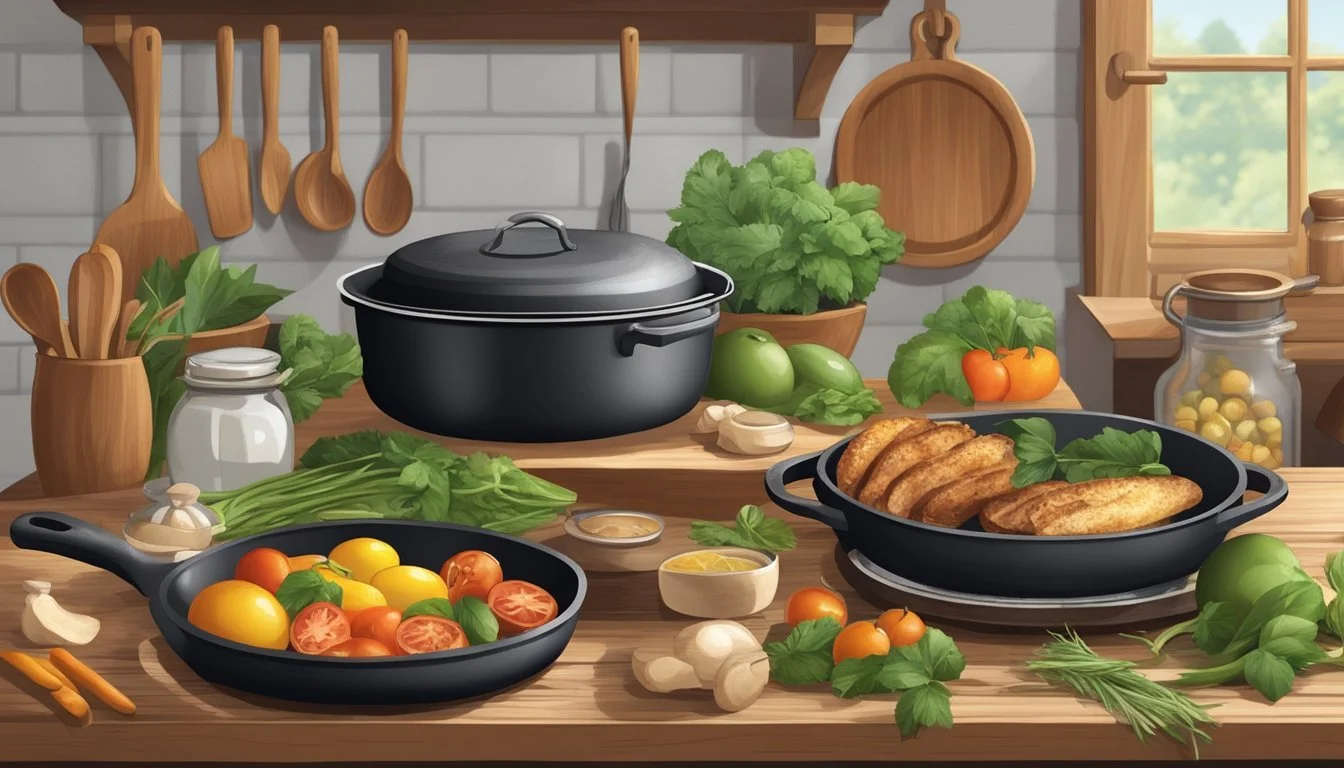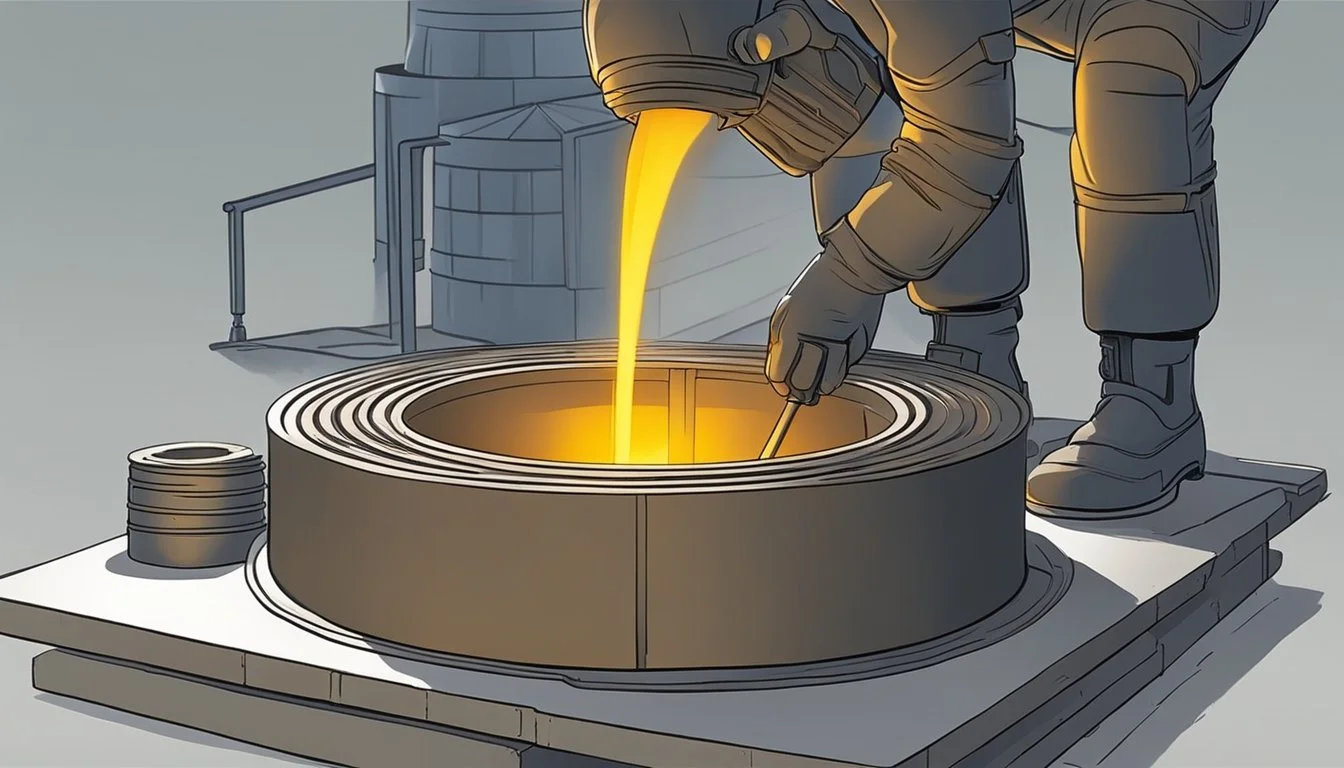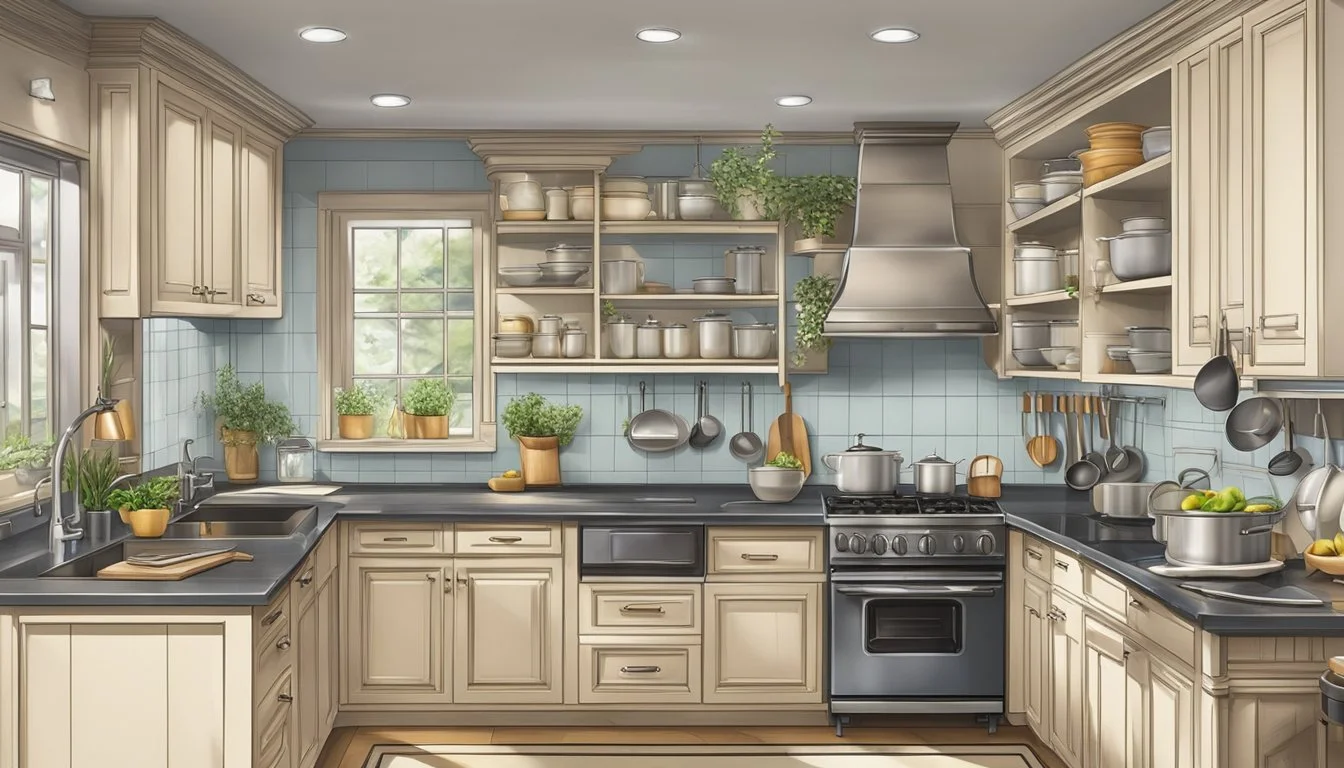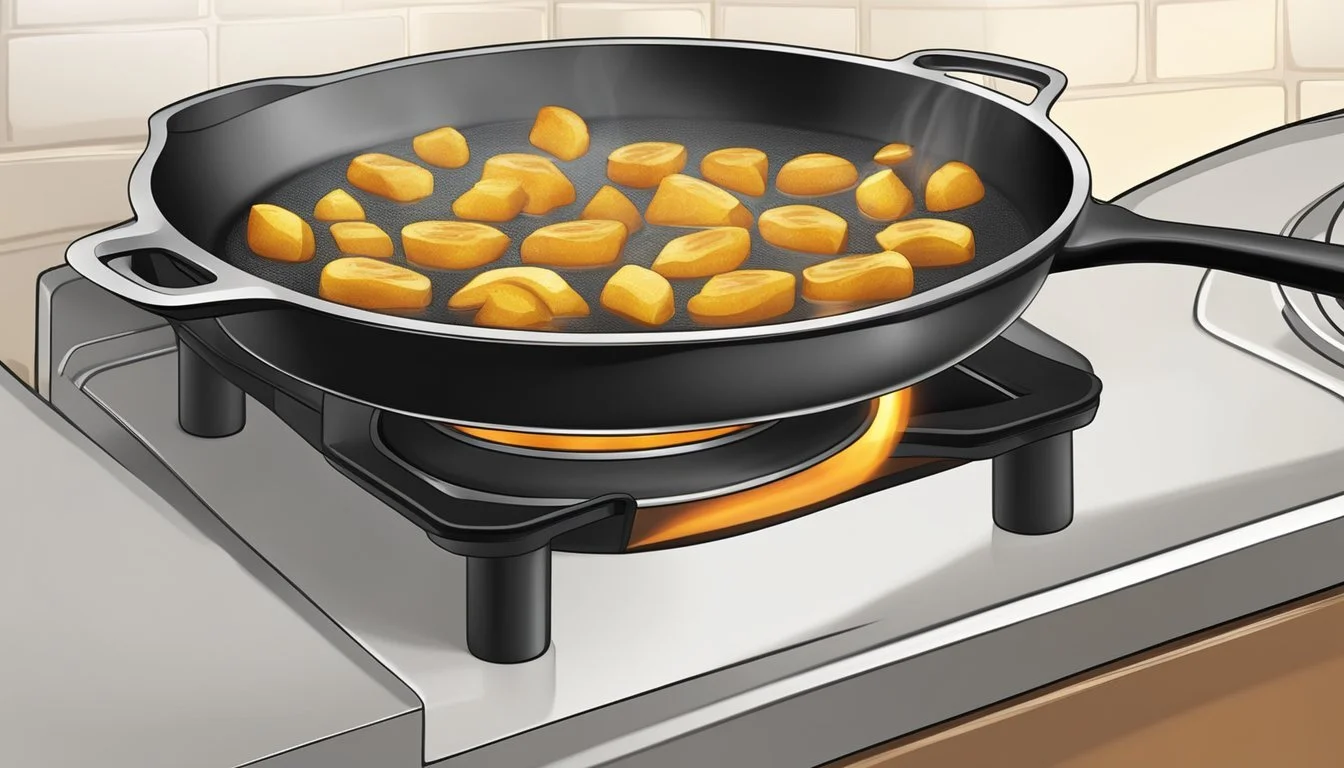The Best Surfaces for Cooking with Cast Iron
Optimal Heat Conductors and Durability Choices
Cast iron cookware has long been cherished for its durability and versatility in the kitchen. Characterized by its superior heat retention and even heating, cast iron makes an excellent surface for a myriad of cooking techniques. Unlike other materials that might warp or degrade over time, cast iron's robust composition ensures it can withstand high temperatures and transfer heat uniformly, whether it's used on an open flame, in an oven, or on stovetops.
One of the unique features of cast iron is its ability to develop a natural non-stick surface through the process of seasoning. Regular seasoning with oil not only enhances its non-stick properties but also contributes to the longevity of the cookware. As the seasoning builds up over time, it provides a chemical-free alternative to synthetic coatings found in other non-stick pans, making cast iron a healthy choice for everyday cooking.
However, this cookware does require a specific type of care to maintain its best condition and performance. Cleaning cast iron immediately after use while it's still warm, drying it thoroughly to prevent rust, and avoiding harsh soaps that can strip the seasoning are all critical steps. With the correct maintenance, cast iron cookware can be a reliable and effective cooking surface that can last for generations, providing consistent results and enhancing the flavors of the foods prepared within it.
When it comes to cooking with cast iron, the best surfaces can elevate the culinary experience to new heights. From the versatility of cast iron baking to the sizzle of cast iron searing, these surfaces provide a perfect canvas for creating a wide array of culinary delights. The convenience of one-pan cast iron recipes makes meal preparation a breeze, offering a delightful and efficient cooking experience.
Moreover, in professional cast iron cooking settings, these surfaces showcase the adaptability and reliability of cast iron cookware, adding a touch of culinary expertise to the kitchen. As the enduring presence of cast iron in cast iron popular culture continues to thrive, these surfaces become a focal point for culinary creativity and tradition.
Additionally, these surfaces are perfect for crafting delicious cast iron recipes, offering a wide range of delectable dishes that cater to various tastes and preferences. Furthermore, for those who appreciate a crispy and flavorful crust, these surfaces are ideal for preparing mouthwatering cast iron pizza, adding a delightful twist to the culinary repertoire. In essence, the best surfaces for cooking with cast iron provide a foundation for culinary exploration and creativity, ensuring that each dish is prepared to perfection.
History and Benefits of Cast Iron Cookware
Cast iron cookware has a storied history and a host of benefits that continue to make it popular in modern kitchens.
From Ancient to Modern Pan
Cast iron has been utilized for cooking for centuries, with roots traceable to ancient China. By the 16th century, it made its way into European kitchens. The material's ability to retain and distribute heat evenly has seen cast iron evolve from simple pots to the versatile modern pans used today. Cast iron skillets are a mainstay in culinary tools, ranging from basic models to those produced by renowned manufacturers like Lodge Cast Iron.
Generations of Cast Iron Use
Due to its remarkable durability, cast iron cookware often becomes a generational heirloom, passed down from one cook to the next. These pieces withstand the test of time, improving with use as they develop a natural non-stick surface, known as seasoning, which enhances flavor. Cast iron is recognized for its sustainability, with the ability to outlive most modern cookware and thereby reduce waste.
The Manufacture and Selection of Cast Iron Surfaces
The manufacture of cast iron cookware is an intricate process that results in a variety of cooking surfaces, and the selection of a cast iron skillet involves understanding these nuances. Consumers must balance personal preferences with the qualities of well-crafted cast iron skillets to ensure an optimal cooking experience.
Crafting Quality Cookware
The manufacturing process of cast iron involves melting various types of iron and steel scrap at high temperatures and then pouring this mixture into sand molds. This centuries-old technique grants durability and heat retention to the cookware. Companies like Butter Pat Industries, Smithey Ironware, and The Field Company refine this process to create skillets with unique characteristics.
Butter Pat Industries is known for their polished cookware surfaces that enhance non-stick properties.
Smithey Ironware specializes in a combination of handcrafting and machine-assisted techniques to ensure a smooth finish.
The Field Company prides itself on creating lightweight cast iron skillets that maintain the traditional benefits of cast iron cookware.
Through these processes, each manufacturer aims to elevate the culinary performance of their cast iron surfaces while ensuring longevity.
Choosing the Right Cast Iron Skillet
Selecting a cast-iron skillet depends on a few critical factors, and individuals should consider the skillet's weight, surface smoothness, and thermal properties.
Weight and Handling: Skillets from The Field Company tend to be lighter, making them easier to handle, particularly for those concerned with a skillet's maneuverability.
Surface Smoothness: Butter Pat Industries skillets offer ultra-smooth surfaces which may appeal to those seeking a more non-stick experience.
Heat Retention and Distribution: Although The Field Company's skillets are lighter, they may lose heat more rapidly than heavier pans from brands like Smithey Ironware.
Skillet pricing also varies, with premium brands commanding higher prices for their finely-crafted cookware. Ultimately, the selection of a cast-iron skillet should align with the cook's preferences and cooking style.
Preparation and Seasoning of Cast Iron
A well-seasoned cast iron skillet provides an excellent nonstick surface and ensures even heat distribution. Proper seasoning and ongoing maintenance are crucial for optimal cooking performance and longevity of the cookware.
The Seasoning Process
To season a cast iron skillet, one should start by heating the cookware slightly to open its pores. This can typically be done by placing it in a 200-degree oven for about 15 minutes. Following this, the skillet should be coated with a high-smoke-point oil such as flaxseed, vegetable, or canola oil. It's important to apply a thin, even layer of oil across the entire surface, inside and out, including the handle.
After oiling, the cookware should be placed upside down in an oven preheated to 400-500 degrees Fahrenheit. This positioning prevents oil from pooling and creating sticky spots. Below the skillet, a sheet of foil on the bottom rack catches drips. The skillet should bake for approximately an hour to polymerize the oil, forming a durable nonstick coating. Once the time has elapsed, the oven should be turned off, allowing the cookware to cool down gradually inside.
Temperature Duration Oil Type Cooldown 400-500°F 1 hour High-smoke-point Inside the oven until fully cool
Maintaining a Well-Seasoned Skillet
Ongoing maintenance of a well-seasoned skillet is relatively straightforward. Each use can actually improve the seasoning, provided the skillet is used correctly and certain practices are followed. After cooking, the skillet should be cleaned using hot water and, if necessary, a small amount of soap. It should be dried thoroughly, as lingering moisture can lead to rust and degradation of the seasoning.
Once the skillet is clean and dry, it's beneficial to heat it on the stove briefly to ensure complete removal of water. Then, a very light layer of oil can be applied to restore the sheen and reinforce the nonstick surface. This repeated light oiling after each use maintains the pan's seasoning, ensuring a consistent and reliable nonstick coating for all cooking needs.
After Use Cleaning Method Drying Post-cleaning Treatment Preheat pan Hot water, minimal soap Towel dry and heat on stove Light oil layer; wipe off excess
It's essential to avoid abrasive materials or soaking the skillet in water, as these can strip the well-developed nonstick coating. If the seasoning does become compromised, the re-seasoning steps should be repeated to restore the skillet's cooking surface.
Cooking Surfaces and Compatibility
When using cast iron cookware, understanding how it interacts with different cooking surfaces is crucial to ensure safety, prevent damage, and optimize cooking performance.
Cast Iron on Electric Stoves
Cast iron pans are compatible with electric stoves; however, users should be cautious about the weight. These pans are heavy and can scratch or damage the coils if not handled with care. It is recommended to lift the pan rather than sliding it across the coils. The heat distribution on electric stoves can be uneven, so it's advisable to pre-heat the cast iron pan gradually on a medium setting to avoid hot spots.
Key points for using cast iron on electric stoves:
Gradually preheat to avoid warping.
Heavyweight requires careful handling.
Suitability on Glass and Ceramic Cooktops
Cooktops made of glass or ceramic are delicate compared to other materials. Cast iron can be used on these surfaces, but with precautions:
Avoid sliding the pan to prevent scratches.
Use heat diffusers to distribute the weight and avoid excessive direct heat.
Do not drop or place the heavy pan roughly on the cooktop.
Advantages and precautions:
Provides even heating when used carefully.
Can cause scratches or cracks if mishandled. Use with caution.
By respecting these guidelines, cast iron pans can be a versatile tool in the kitchen on a variety of cooking surfaces.
Cooking Techniques with Cast Iron
Working with cast iron cookware demands an understanding of its heating characteristics and the diverse array of meals that can be created with it. From frying eggs to searing steak, the techniques used can enhance the cast iron cooking experience.
Heating and Temperature Control
The key to successful cooking with cast iron is mastering even heating and temperature control. Pre-heating the pan on a stove top should be a gradual process, aligning the burner size with the pan size to distribute the heat evenly. Cast iron retains heat effectively, making high temperatures unnecessary. A medium heat setting is often sufficient for preventing the food from sticking to the cookware's smooth surface. When using an oven, cast iron pans require a temperature typically between 450°F and 500°F for best results. It's advisable to heat the pan upside down in the oven to ensure an even temperature distribution across the cooking surface.
Versatility in Cooking Various Dishes
The versatility of cast iron allows for a breadth of cooking techniques suitable for an array of dishes. Whether it’s searing a steak on a high heat to achieve that perfect crust or gently cooking fried eggs on a lower heat setting, cast iron cookware adapts to the needs of each dish. It’s highly compatible with various heat sources, from the traditional stove top to modern induction cooktops, though care should be taken to not scratch the surfaces of the latter. Cast iron's ability to go from stove to oven makes it ideal for meals that require multiple cooking methods — a staple in many meal plan services. This cookware is not only limited to traditional recipes but also excels in modern culinary applications, enabling both novice cooks and seasoned chefs to experiment with a wide range of cooking techniques.
Cast Iron in the Oven and Broiler
Cast iron's exceptional heat distribution makes it ideal for oven-based baking and broiler-intensive cooking.
Baking Breads and Desserts
When baking breads or desserts, the cast iron surface provides a consistent heat that can contribute to an even rise and a desirable crust. For instance:
Breads: A preheated cast iron skillet or Dutch oven can simulate the steam-injected ovens found in professional bakeries, giving breads like sourdough a crispy crust and soft interior.
Desserts: Fruit cobblers or skillet cookies baked in cast iron experience caramelization and browning, enhancing their flavors.
Broiling Meats to Perfection
Under the broiler, cast iron excels in searing meats by withstanding high temperatures and retaining heat. Here's what to keep in mind:
Steaks: Achieve a perfectly seared crust by preheating the skillet, transferring it to the broiler with the meat, and broiling until the desired doneness.
Chicken: For a juicy interior and crisp skin, broil chicken pieces in cast iron, turning once to ensure even cooking and browning.
Cleanup and Maintenance
Proper cleanup and maintenance ensure the longevity and non-stick quality of cast iron cookware. Following specific guidelines will keep cast iron in top condition.
Effective Cleaning Methods
To clean cast iron after cooking, one should use hot water and a non-metal scrub brush to remove food bits. If necessary, for stubborn food particles, they can simmer a small amount of water in the pan to help release them. After washing, drying the pan immediately with a towel or heating it on the stove to evaporate moisture is crucial to prevent rust. Soap is not usually required, but if used, it should be mild and applied sparingly.
Do:
Use hot water and a stiff brush.
Simmer water for tough residue.
Dry thoroughly after washing.
Don't:
Soak the pan.
Use soap regularly.
Leave the pan wet.
Re-seasoning Your Cookware
Re-seasoning cast iron involves coating it with a thin layer of cooking oil and heating it to create a protective surface. This process can be done in an oven or on a stovetop. If using an oven, one should preheat it to 450-500°F, place the cookware in the oven for a few minutes, then apply oil with a towel before returning it to the oven for about an hour. On a stovetop, heat the cookware and apply a small amount of oil, wiping to coat evenly, and heat until it just starts to smoke, then turn off the heat and let it cool.
Steps for Re-seasoning:
Wash and dry the cookware thoroughly.
Apply a thin, even coat of oil (vegetable, canola, or flaxseed) using a cloth or paper towel.
For ovens: Heat at 450-500°F for one hour.
For stovetops: Heat until lightly smoking, then cool.
Frequent cooking with fats will naturally maintain the seasoning of cast iron, reducing the need for frequent re-seasoning.
Advanced Cast Iron Cooking Tips
In the realm of cast iron cooking, prowess is demonstrated through the mastery of maintaining a nonstick surface and the apt use of accessories that maximize the skillet's potential.
Nonstick Surface without Chemicals
Cast iron aficionados know that a well-seasoned skillet provides a natural nonstick surface, paramount for effortless cooking and cleaning. Achieving this involves:
Selecting the Right Oil: A high-smoke point oil like canola or flaxseed is ideal for seasoning, preventing smoking during the process.
Seasoning Process:
Wash and dry the skillet thoroughly.
Apply a thin, even layer of oil over every surface.
Invert and place in an oven preheated to about 450°F-500°F.
Bake for one hour, then turn off the heat, letting the skillet cool in the oven.
Accessorizing Your Cast Iron Skillet
Proper accessories can elevate one's cast iron experience. These include:
Handle Cover: A heat-resistant handle cover is essential, as cast iron handles become very hot.
Food Release Aids: A sprinkle of flour on the skillet before adding dough can ease the release of breads and other baked goods.
By following these tips, one ensures that their cast iron skillet is not only an exceptional cooking surface but also a cherished tool, enduring through countless meals.
Conclusion
Cast iron cookware presents a unique combination of durability, versatility, and consistent cooking performance. When considering the best surfaces for cooking with it, one should prioritize even heating and appropriate seasoning to exploit its capabilities fully. They provide a natural non-stick surface that improves with use, creating an optimal environment for a variety of dishes, from searing meats to baking cornbread.
Even Preheating: Users should allow cast iron to preheat for 5-10 minutes, as it doesn't distribute heat as quickly as other materials.
Seasoning Maintenance: Regular seasoning with oil enhances its non-stick properties and protects against rust.
Heat Retention: Due to its ability to retain heat, cast iron excels on low to medium heat settings, making it energy efficient.
When cared for properly, cast iron becomes more non-stick over time, lending itself to healthier cooking by reducing the need for additional fats and oils. It's vital for users to follow care instructions scrupulously, including using heat-resistant mitts and avoiding abrupt temperature changes to prevent cracking.
In summary, the cast iron's resilience and cooking qualities largely depend on acknowledging and embracing its unique needs concerning preheating, seasoning, and heat management. Cooks who do so will find that their cast iron cookware delivers exceptional culinary results time and time again.









